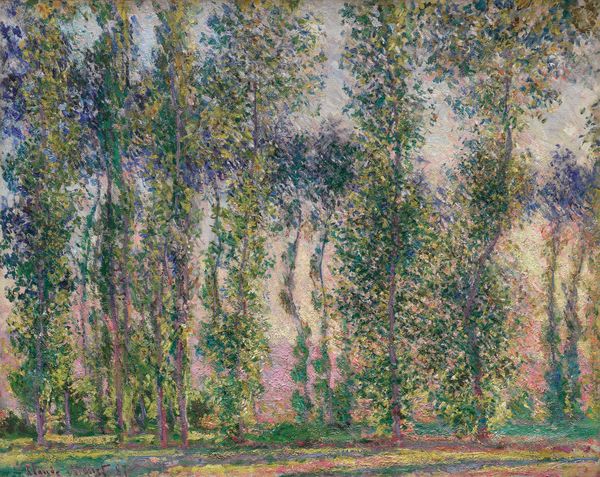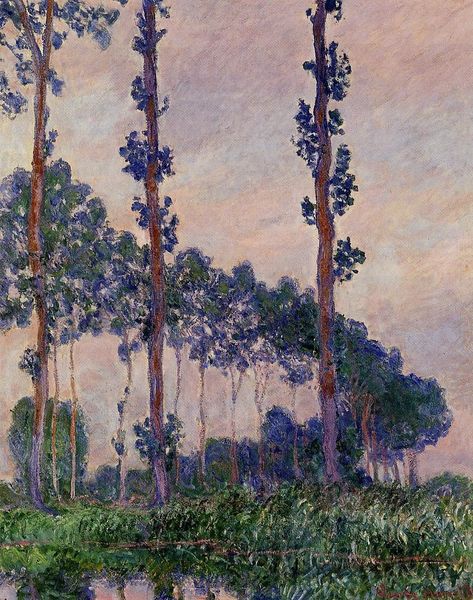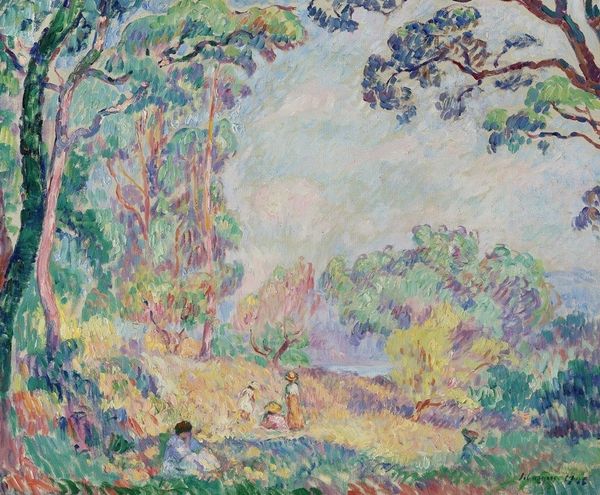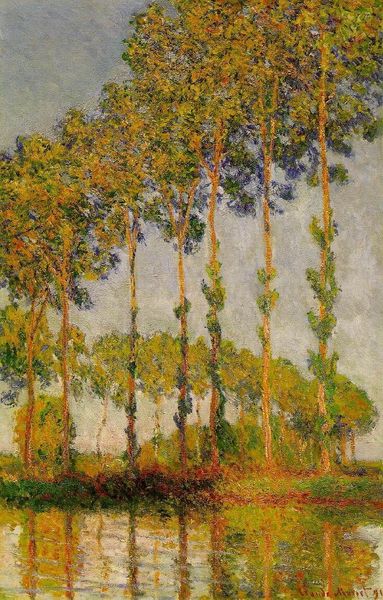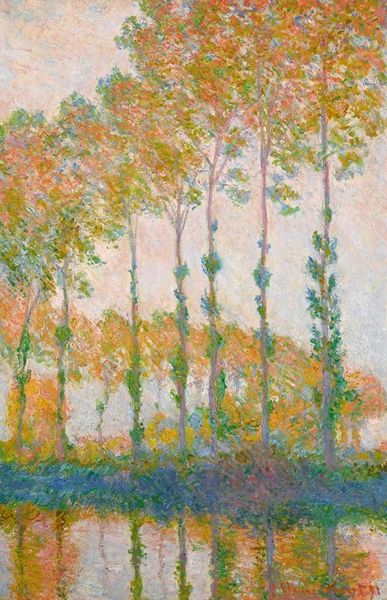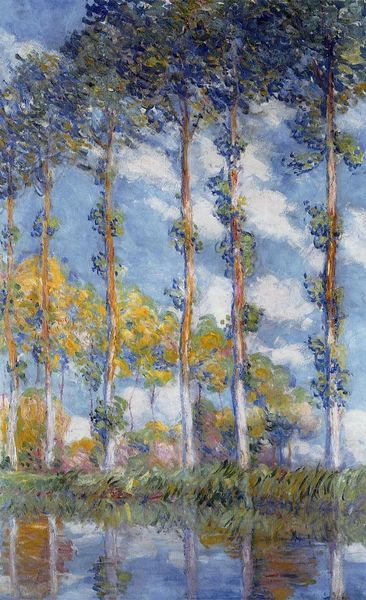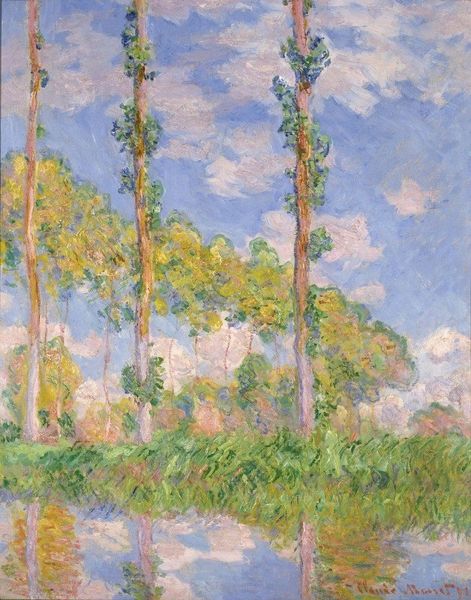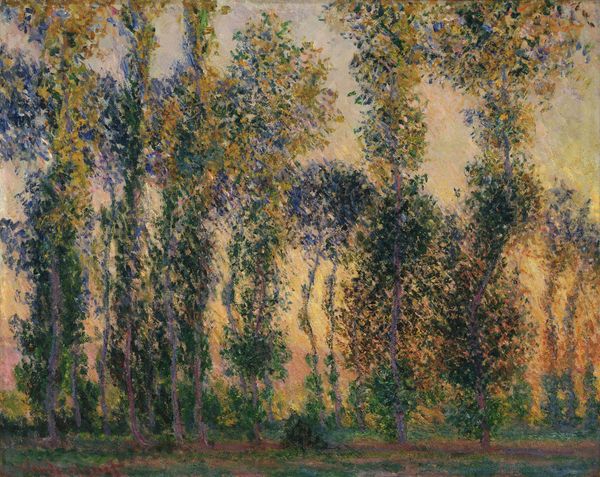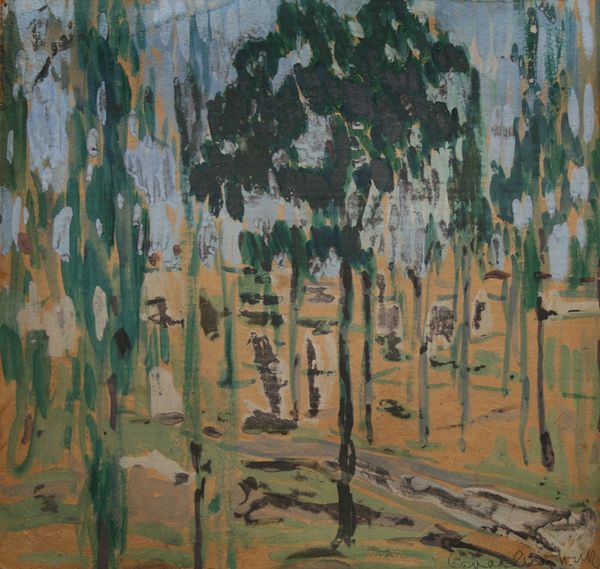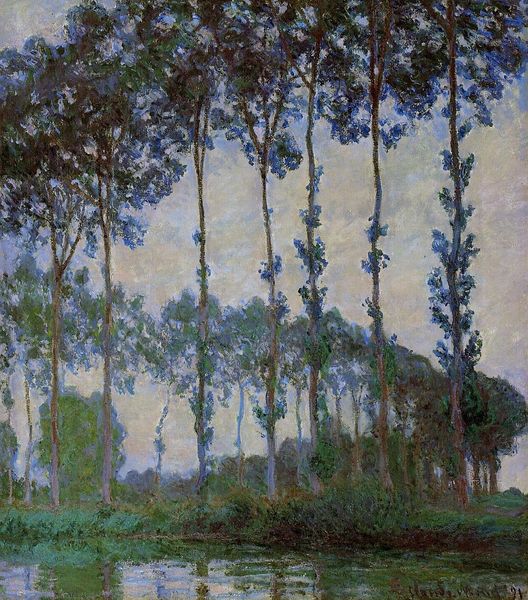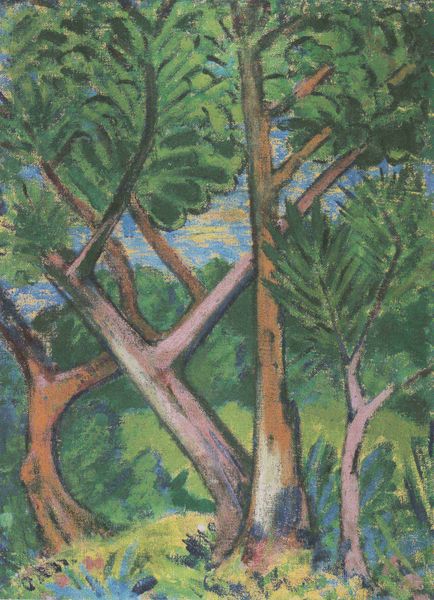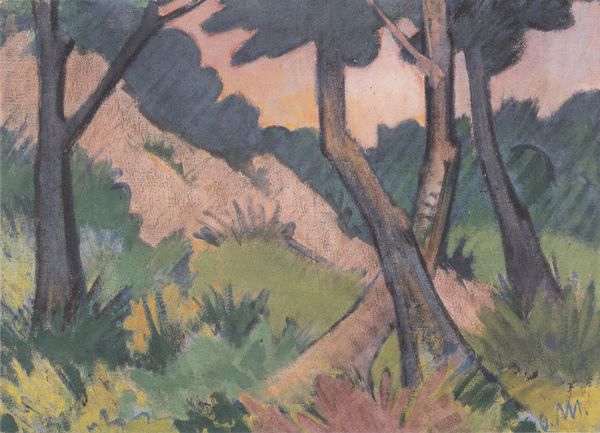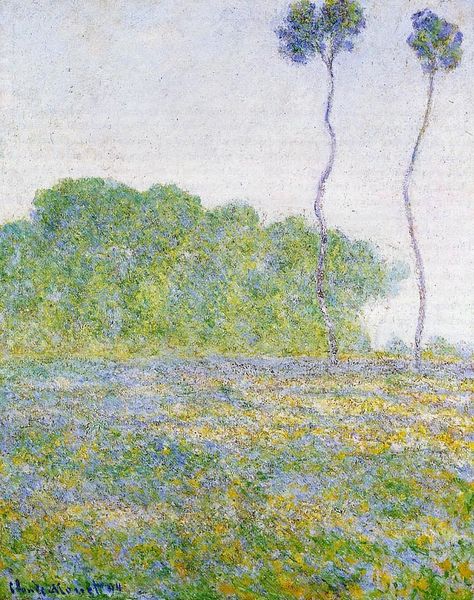
Copyright: Public Domain: Artvee
Curator: Painted in 1891, this is Claude Monet's "Wind Effect, Series of The Poplars," an oil on canvas study capturing a stand of trees bending to a strong wind. Editor: The palette immediately strikes me as subdued yet luminous, dominated by grays, greens, and blues—an almost monochromatic representation. There’s a dynamic energy created by the sinuous lines of the trees. Curator: Indeed, it’s part of a series he painted en plein air. It's worth thinking about what it meant for Monet to capture the trees at a specific historical moment. The state controlled their sale for lumber; their ultimate purpose was always connected to the infrastructures and needs of burgeoning Parisian industrialization. Editor: Interesting—and yet, in his rendering, that industrial context fades. I see, more fundamentally, a study of light and atmospheric conditions. The brushstrokes themselves seem to mimic the movement of the wind. Semiotically, the leaning trees might symbolize the power of nature over human constructions. Curator: Consider, however, the relationship between art, commerce, and labor inherent in Impressionism. Monet’s depictions romanticized the countryside, presenting an image ripe for consumption by the Parisian bourgeoisie—escapism bought and sold. Editor: I wouldn’t disagree with your general point about the art market, but here, the emphasis remains firmly on the optical. Note how Monet deconstructs form through color, foreshadowing later abstraction, while still maintaining representational clarity. It exemplifies the philosophical shift toward valuing subjective perception. Curator: True, and it makes the commodification and consumption of "Wind Effect" that much more subtle. To view the trees without a consciousness of what awaited them down the Seine River feels…incomplete. It transforms our engagement from aesthetic pleasure to social reckoning. Editor: Perhaps the dialogue *between* the aesthetic and the socioeconomic constitutes the work’s enduring tension and relevance. It asks us to see beyond beauty, or through it. Curator: Precisely—the material conditions behind even the most apparently straightforward visual impression cannot be divorced from it.
Comments
No comments
Be the first to comment and join the conversation on the ultimate creative platform.
